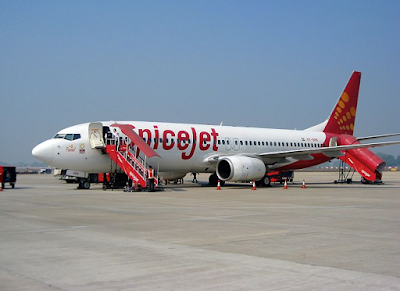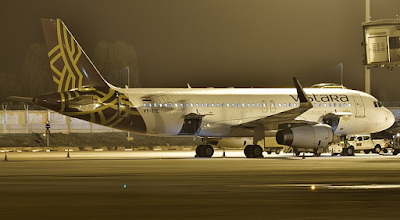The company intends to lacerate its commercial aircraft and service business with total job losses reaching 19000 this year which is 3000 more than it said before.
Apart from that, the new Boeing 777X aircraft won't carry passengers until 2022 instead of next year.
Unfortunately, Boeing again had to defer its production plans for the Boeing 787 Dreamliner as a saturated market left the company with a stockpile of undelivered jets.
As a consequence of reduction of manufacturing rates, Boeing is thinking on the terms of consolidating the assembly at a single site instead of building the model in Washington state and South Carolina.
Moreover, executives are trying to resize operations for a market slashed by the pandemic.
What ameliorates the worries of Boeing Inc. is the grounding of its best selling jet: The Boeing 737MAX.
 |
| Source: https://commons.wikimedia.org/wiki/File:Boeing_737_MAX_(23326959580).jpg License URL: https://creativecommons.org/licenses/by/2.0/deed.en Credit: Aka The Beav | Photographer |
Check out here to find out why Boeing 737MAX was grounded: The-Real-Reason-why-Boeing-737MAX-crashed
Nevertheless, Boeing will also ramp up work at its 737 Max factory more gradually than initially planned due to the virus.
"This is a true business transformation effort," Chief Financial Officer Greg Smith said on a call with analysts to discuss Boeing's earnings.
With such impacts on Boeing, its shares fell 3% to $165.68 at 12:45 p.m. in New York, the biggest drop on the Dow Jones Industrial Average.
Boeing tumbled 48% this year through Tuesday, also the most on the Dow.
Although the analyst had predicted a drain of $6.57 billion as the company cut costs and slowed work on key aircraft programs to save cash while demand crumbled, the company saw a loss of $5.63 billion in the second quarter.
Investors had braced for an awful quarter after Boeing delivered just 20 commercial jets in the three-month period, down from 149 a year earlier.
Sales plunged 25% to $11.8 billion, compared with the $13 billion average of analyst estimates compiled by Bloomberg.
Total debt soared to $61.4 billion from $38.9 billion at the end of the first quarter.
Ultimately, their best bet is the 737MAX and they are making progress toward certifying the 737 Max, which in normal times would be the company's biggest cash generator.
But the virus has further delayed Boeing's plans to gain regulatory approval to return the jet to service, a milestone anticipated for later this year.
"Not only do you have to get the Max through certification -- and I feel like they're well on their way -- but they have to shepherd a bunch of airlines through taking deliveries," Ferguson said in an interview.
"This is a true business transformation effort," Chief Financial Officer Greg Smith said on a call with analysts to discuss Boeing's earnings.
With such impacts on Boeing, its shares fell 3% to $165.68 at 12:45 p.m. in New York, the biggest drop on the Dow Jones Industrial Average.
Boeing tumbled 48% this year through Tuesday, also the most on the Dow.
Although the analyst had predicted a drain of $6.57 billion as the company cut costs and slowed work on key aircraft programs to save cash while demand crumbled, the company saw a loss of $5.63 billion in the second quarter.
Investors had braced for an awful quarter after Boeing delivered just 20 commercial jets in the three-month period, down from 149 a year earlier.
Sales plunged 25% to $11.8 billion, compared with the $13 billion average of analyst estimates compiled by Bloomberg.
Total debt soared to $61.4 billion from $38.9 billion at the end of the first quarter.
Ultimately, their best bet is the 737MAX and they are making progress toward certifying the 737 Max, which in normal times would be the company's biggest cash generator.
But the virus has further delayed Boeing's plans to gain regulatory approval to return the jet to service, a milestone anticipated for later this year.
"Not only do you have to get the Max through certification -- and I feel like they're well on their way -- but they have to shepherd a bunch of airlines through taking deliveries," Ferguson said in an interview.





